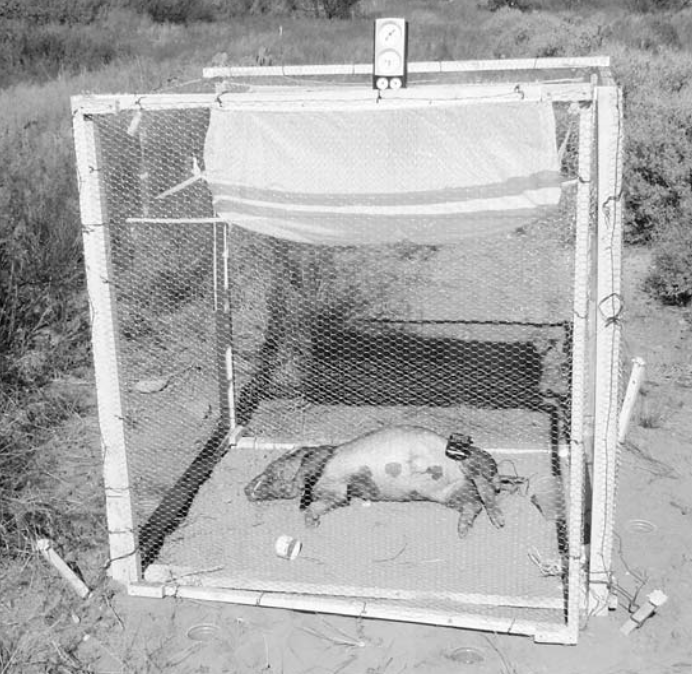Little House Flies
Domínguez M C & Aballay FH. 2014
An updated key to the species of Fannia Robineau-Desvoidy (Diptera: Fanniidae) of southern South America, and the description of a new species from Mendoza, Argentina.
Zootaxa 3795, 152-160.
The aim of this study is to describe Fannia puxcu sp. n., a new species of the genus Fannia Robineau-Desvoidy (Diptera: Fanniidae) that was collected in the Villavicencio Provincial Reserve in Mendoza, Argentina, and to present an updated key to the 27 species of Fannia Robineau-Desvoidy (Diptera: Fanniidae) of Southern South America. The male of F. puxcu sp. n. is described, and illustrations provided as well as distributional records and a discussion of its possible phylogenetic affinities.
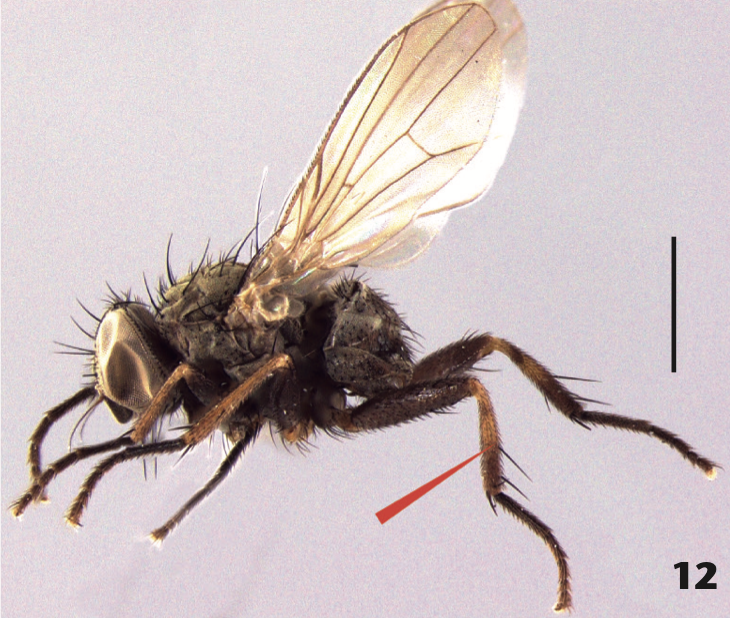

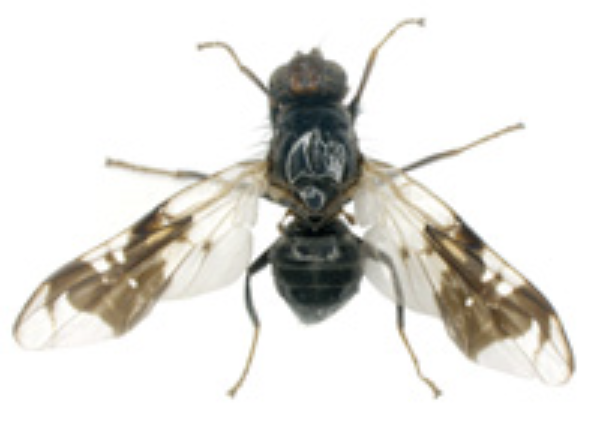


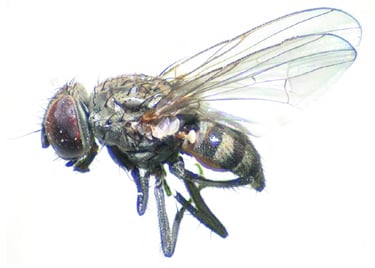
Grisales D, Lecheta MC, Aballay FH, & de Carvalho CJB. 2016
A key and checklist to the Neotropical forensically important "Little House Flies" (Diptera: Fanniidae).
Zoologia 33, e20160054.
Fanniidae (Insecta: Diptera) is a relatively small family (ca. 350 spp.) with five genera, of which Fannia Robineau-Desvoidy, 1830 and Euryomma Stein, 1899 have Neotropical distributions. Some of these species are almost always found in forensic studies. Forensically relevant species have been neglected, despite recent forensic studies that suggest their importance for estimating post-mortem interval (PMI). Thus, current and updated keys to identify adults or larvae on carcasses are unavailable for the most important species. While immature stages are important in estimating PMI, evidence suggests that adults (Fanniidae as well as other families) may also be useful for this purpose. Here we provide a key to males of the species of Fanniidae (found on corpses and other decomposing organic matter) with a checklist of species that have been used in forensics in the Neotropical region. The key comprises all 38 species of Fannia and Euryomma that have already been successfully used in forensics, and species that are potentially useful for estimating PMI. These records were found after reviews of the literature and data from entomological collections. Photographs and illustrations of the main characters in the key are provided.
Aballay FH, Domínguez MC, & Fernández Campón F. 2012
Adult Fanniidae associated to pig carcasses during the winter season in a semiarid environment: Initial examination of their potential as complementary PMI indicators.
Forensic Science International 219, 284.e1-284.e4.
Besides the dominant necrophagous dipteran of the families Sarcophagidae and Calliphoridae usually used for post-mortem interval (PMI) estimations, species of other families such as Fanniidae have frequently been reported in forensic studies. Though less abundant, these species are prevalent in decomposing carcasses with most reports being anecdotal. In this study we identified adults of the fly family Fanniidae associated to pig carcasses located under different local environmental conditions (sun and shade) in a semiarid area at Mendoza, Argentina during the winter season. We examined the potential of species of this family as indicators of PMI by measuring abundance, time of occurrence and residency time at the carcasses. We identified six species of Fanniidae: Euryomma peregrinum Meigen, Fannia albitarsis Stein, Fannia femoralis Stein, Fannia fusconotata Rondani, Fannia heydeniiWiedemann and Fannia sanihue Domı ́nguez and Aballay. Overall, fly abundance was higher at the sunlit than at the shaded carcass. The most abundant species at the sun was F. fusconotata while at the shaded carcass F. femoralis was the most abundant species. Based on their residency time, however, species with higher potential as PMI indicators seem to be F. heydenii and F. sanihue as their residency time at the carcass was restricted to a short period of the decomposition process. Other species were present throughout most of the decomposition process or in such a low abundance (E. peregrinum) that they were not useful as indicators. These preliminary results indicate that adults of some species of Fanniidae could act as a good complementary indicator species during the winter season. In particular, F. heydenii and F. sanihue should be the focus of further studies which should also expand to other seasons.
Remedios-De León M, Aballay FH, Domínguez MC, & González-Vainer P. 2015
Fannia fusconotata and Fannia sanihue (Diptera: Fanniidae): First records in Uruguay and distribution extension.
Check List 11, 1734.
Fannia fusconotata (Rondani, 1868) and Fannia sanihue Domínguez & Aballay, 2008 are recorded for the first time in Uruguay, extending the Neotropical distribution of these taxa eastward in South America. The specimens were collected using modified Malaise traps located above pig carcasses in Pando, Canelones, Uruguay, from February to April 2011. This contribution is a part of the first study to be undertaken into forensic entomology in Uruguay.
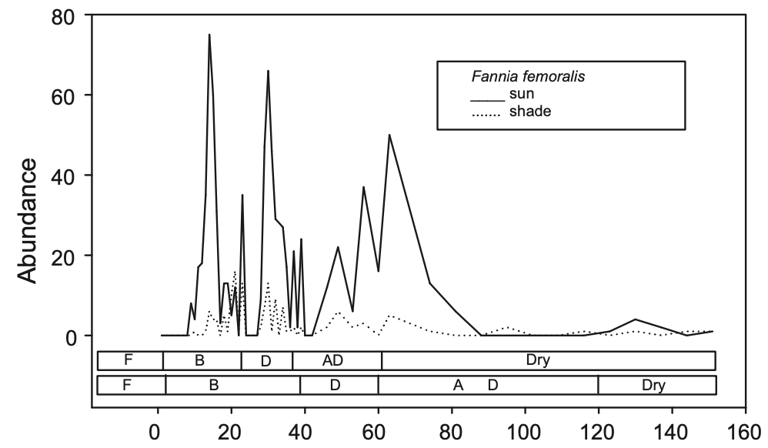

Domínguez MC & Aballay F. 2008
A new species of the genus Fannia Robineau-Desvoidy (Diptera: Fanniidae) collected on pig carrion in Mendoza, Argentina.
Annales Zoologici 58, 819-824.
Besides the dominant necrophagous dipteran of the families Sarcophagidae and Calliphoridae usually used for post-mortem interval (PMI) estimations, species of other families such as Fanniidae have frequently been reported in forensic studies. Though less abundant, these species are prevalent in decomposing carcasses with most reports being anecdotal. In this study we identified adults of the fly family Fanniidae associated to pig carcasses located under different local environmental conditions (sun and shade) in a semiarid area at Mendoza, Argentina during the winter season. We examined the potential of species of this family as indicators of PMI by measuring abundance, time of occurrence and residency time at the carcasses. We identified six species of Fanniidae: Euryomma peregrinum Meigen, Fannia albitarsis Stein, Fannia femoralis Stein, Fannia fusconotata Rondani, Fannia heydenii Wiedemann and Fannia sanihue Domı ́nguez and Aballay. Overall, fly abundance was higher at the sunlit than at the shaded carcass. The most abundant species at the sun was F. fusconotata while at the shaded carcass F. femoralis was the most abundant species. Based on their residency time, however, species with higher potential as PMI indicators seem to be F. heydenii and F. sanihue as their residency time at the carcass was restricted to a short period of the decomposition process. Other species were present throughout most of the decomposition process or in such a low abundance (E. peregrinum) that they were not useful as indicators. These preliminary results indicate that adults of some species of Fanniidae could act as a good complementary indicator species during the winter season. In particular, F. heydenii and F. sanihue should be the focus of further studies which should also expand to other seasons.
